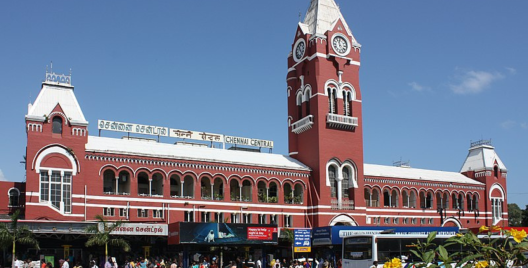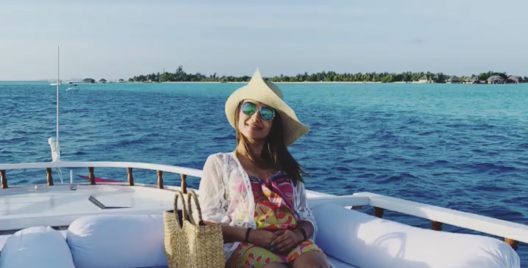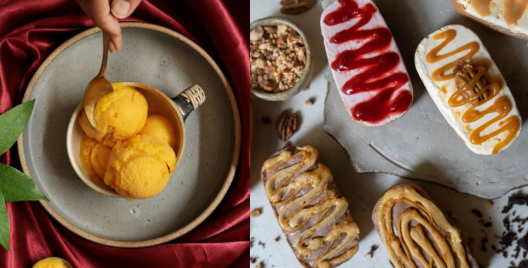As Indians traveling to our island partner we are plenty aware of what comprises the trip. The trifle in the country coupled with ease when it comes to cuisine and language. The one thing we are yet to uncover is how best to make a holiday out of our trip there. Although most tourists seem to concentrate on the Northern part of the country, which is most receptive to Indian tourists and similar to India, it is the Southern half that is intriguing and lesser influenced. A marriage of international relations plus the original Tamil settlers, South Sri Lanka is a comparable in beauty to Kerala but is not similar to us otherwise.

Bentota
The journey begins at Colombo International airport. A coastal town in the Galle district, Bentota is the first stop at 56 kilometers from Colombo. Although converted to the current rate, Indian rupee1 is worth 2.3 Sri Lankan rupees (Might differ), the prices of services and goods are one and a half times more when in the region. For example, although an auto rickshaw (better known as Tuk Tuk there) costs about 3000 Sri Lankan rupees, the actual journey had it happened in India would only cost about INR 672 (at Rs.12 per km). The calculation is still lesser in India adjusted to cost of living. We take a bus instead to Bentota from Colombo and given that bus services are excellent in the country the journey was quite pleasant at the cost of just LKR 160 (INR 68).
A giant Buddha statue greets our arrival as we drive in. The city of Bentota is a sleepy area filled with small lanes spread all over and imported goods shops. Stocking up on some really good edibles and commodities we reach the first resort to stay at, ‘Riverbank Bentota Hotel’. Situated right on the coast, the doors of the room overlook right into the ocean. Come evening, we are greeted with pleasant aromas of fried fish in the making. The host informs us about boats waiting to take us on a river safari and we set off in search of one. Ask any local person and they would point to an agent or a boat owner to take you across the backwaters. The river safari turns out to be a great adventure with the spotting of Asian Water Monitors by the trees and some exotic birds and trees. We then row into a mangrove in the backwaters and lookout for crocodiles as well though spotting is seasonal. The backwaters tour stops by there for a minute near a dilapidated house from which a relative of the boat owner breaks out this baby alligator for us to hold in our hands! Although intimidating at first, this act is done on the regular that is until the alligator is no longer a baby and is let loose into the water by the mangrove again.
We then row across to the Bentota estuary wherein a giant hill and a magnificent sight lie. Although the boats usually stay back to drop one back at the resort, we cut ours off as we decide to have dinner outside and take the tuk-tuk via land back to our resort. The beauty of the estuary is not lost on anyone and a sunset walk turns out pretty romantic. After looking for a decent cafe, we have some fried seafood and rice turning back to our resort before starting off to the next city the next day.

Hikkaduwa
Hikkaduwa is quite a sight to behold with pristine beaches and a breezy weather with coastal winds acting as nourishment to the skin. Clearwater beaches are aplenty and since foreign tourists are dime a dozen everywhere, maintenance of these beaches are highest priority and littering is looked down upon. The resort of ‘Coral Sands Hotel’, is a good recommendation and offers a clear view of the beach plus walk into some of the activities. Hikkaduwa is one of the most modern cities in Sri Lanka with nightclubs popular in the area and the International Diving School situated nearby. Surfing, waterboarding and other ocean sports are common here. For the less adventurous Hiikkaduwa has glass boat riding, which is a must do during a visit here! Every colours of the ocean can be perfectly visible to the naked eye with these glass floor boats and almost feels like one is sitting on the water.
Other than water sports, tourists attractions in the area include A Tsunami museum and education center and the Hikkaduwa Turtle hatchery. The former hosts a collection of heart-wrenching (Not for the faint-hearted) photographs and education materials on disaster management which prove to be quite insightful. Don’t forget to make a donation to the victim families or buy some merchandise for support. Moving on to the turtle hatchery next, we are overwhelmed by the masses of cute turtles housed in different cemented pools. There are even turtles who love their backs getting rubbed! On one corner lays the nesting area with tiny signs over little sand mounds containing eggs from different species. Some places in Hikkaduwa also hosts whale watching. As the sunsets and the water activities come to a standstill, one can get air drones on rent to fly by the beach with camera views for some fun. We finish with dinner right outside the hotel in a small home-hotel – a delicious meal of rice, pappads, mixed vegetable, fried seafood and mango chutney (A Sri Lankan staple meal).

Yala
Day 3 we move onto Yala a South City. Moving onto West from East, coasts get replaced by massive woods and dark forests. Checking into Kithala resort in a town called Tissamaharama, we spend some time in the balcony for this resort is famously known for exotic birds and elephant spotting from the resort. After a light meal, we pack up and get ready for the famous Yala jeep tours. The Yala National Park is one of the most visited parks in the country and second biggest park in Sri Lanka. The park is open to two tours of jeep rides with one beginning at 6 AM and the other at 2 PM. It is highly recommended by the travel guides that the early morning one is better as there as animal spotting in the latter one depends on the season.
6 AM the jeep arrives at the hotel to pick up guests. Costing about 10,000 LKR per person, jeeps come in various choices from 4, 6 to 12 seats. We choose the 6-seater and after about a 20-minute ride to the park entrance, we wait for the travel guide to get our park tickets. Tip: Although 6 AM is early enough, 4 AM jeep guides get park tickets faster owing to fewer crowds for the later it gets the longer the wait to enter the park. The jeeps themselves are void of glass panes and come with grills on the sides. With almost a one arm reach to the animals, the jeep safari is one exhilarating experience! Peacocks, marsh crocodiles, wild boars, wild elephants, and gazelles can be spotted in the natural habitat looking like a real-life adaptation of the discovery channel. Mixed ethnicity members in the jeep make for great conversations and after the 6 hours jeep safari, we are totally spent with the awesomeness of adventure engulfing us. Then it is off to a good night’s rest.
At Yala, one can even spot a live prey scene here! The sight of a mongoose chasing a wild rabbit to eat was thrilling to say the least but then an eagle swooped in to catch the hare for itself! Talk about dramatic!

Uda Walawe
The next city that is Uda Walawe almost feels like an eerie ghost town with very fewer people and on further South West of Sri Lanka. Located on the Hambantota district a giant highway spreads across the Uda Walawa Reservoir, which was created in 1969, following the construction of a 3.9 km dam. A walk on the highway is enthralling and one can even see wild elephants down by the dam during the dry season. After checking in to the next hotel that is, ‘Le Green Uda Walawe resort’ which is situated by the end of the dam, we head on down to the Elephant Orphanage and Sanctuary. Although Uda Walalwe also comprises of a national park, we give this one a miss as it is similar to Yala which we have previously visited. If you missed Yala, you can always head to the Uda Walawe National Park.
A must see the attraction, the Uda Walawe Elephant Transit Home or the ETH provides food and shelter for wild elephants along with medical services and more. 4 times a day the ETH hosts a feeding session upon which the gate is opened at intervals and baby elephants come running as fast as their legs could carry, to come to drink milk through funnels held by elephant keepers. The scene of throngs of elephants running into drink milk would make anyone squeal in delight! The adult elephants are let in after a while and fed bamboo leaves and shoots after which the herd moves on back to the forest. Worth the visit, the ETH genuinely takes care of the hundred or so elephants and is worth every rupee. Stop by the gift shop to support the case or to simply get some elephant motif merchandise that makes great souvenirs. The resort of Le green has some great Indian food and after a good meal, we rest before leaving back to the capital.

Colombo
A bus back to Colombo from Uda Walawe lasts more than 3 hours; the journey from the South West corner of the country to the center is no small task. If the bus is not your cup of tea, one can always opt for a train ride back to Colombo and since all rides through Galle consists of a spectacular view of the coasts this is one ride you cannot miss. Checking into, ‘Global Towers’, the hotel by the coasts, the first to be explored is the shopping roads of Colombo. House of Fashion and Odel mall is great for some clothes shopping at very low prices. Duplication road on Kollupitiya is great for just walking around and window shopping as well.















